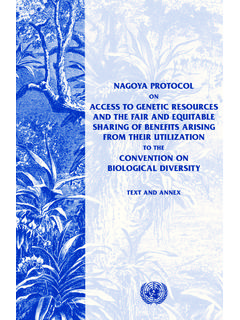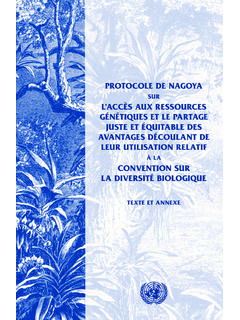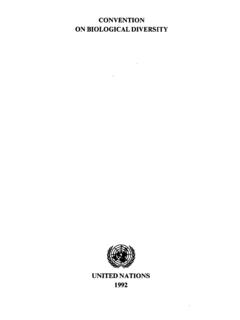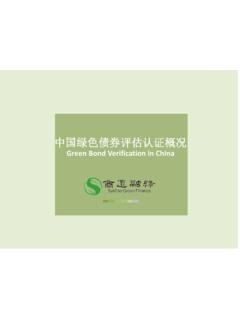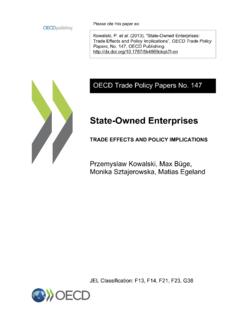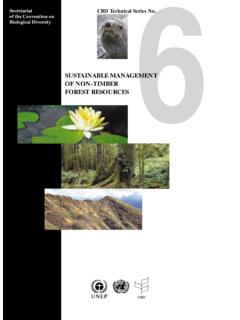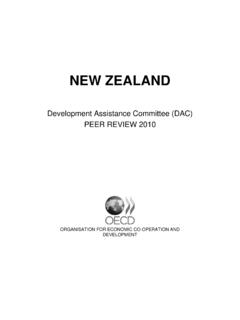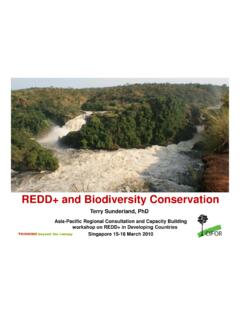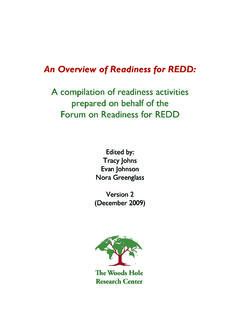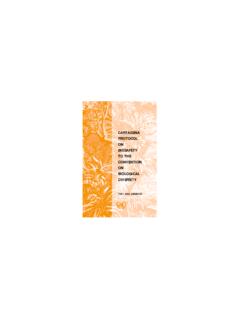Transcription of First draft of the post-2020 global biodiversity framework
1 CBD Distr. GENERAL CBD/WG2020/3/3 5 July 2021 ORIGINAL: ENGLISH OPEN ENDED WORKING GROUP ON THE post-2020 global biodiversity framework Third meeting Online, 23 August 3 September 2021 Item 4 of the provisional agenda* First draft OF THE post-2020 global biodiversity framework Note by the Co-Chairs 1. In decision 14/34, the Conference of the Parties set out the process for developing a post-2020 global biodiversity framework , established the Open-ended Working Group on the post-2020 global biodiversity framework to support this process and designated its Co-Chairs. Subsequently, the Working Group at its First meeting requested the Co-Chairs and the Executive Secretary, with the oversight of the Bureau of the Conference of the Parties, to continue the preparatory process in accordance with decisions 14/34, CP-9/7 and NP-3/15, and to prepare documentation, including a zero draft text of the post-2020 global biodiversity framework1 for consideration by the Working Group at its second meeting.
2 Pursuant to these requests, a zero draft of the post-2020 global biodiversity framework was issued for consideration by the Working Group at its second meeting (CBD/WG2020/2/3). 2. The Working Group at its second meeting considered the zero draft of the post-2020 global biodiversity framework and requested the Co-Chairs and the Executive Secretary, with the oversight of the Bureau, to prepare a document updating those elements of the draft framework that had been reviewed by the Working Group,2 taking into account the annex to the outcomes of the meeting and the submissions received in response to notification 2019-108,3 and to make it available at least six weeks before the twenty-fourth meeting of the Subsidiary Body on Scientific, Technical and Technological Advice. Pursuant to these requests, an updated zero draft was issued (CBD/POST2020/PREP/2/1).
3 3. The Working Group at its second meeting further requested the Co-Chairs and the Executive Secretary, under the oversight of the Bureau, to prepare a First draft of the global biodiversity framework , taking into account the conclusions adopted by the Working Group as contained in the report on its second meeting (CBD/WG2020/2/4), as well as ongoing consultation processes, the outcomes of the Ad Hoc Technical Expert Group on Digital Sequence Information, the outcome of the twenty-fourth meeting of the Subsidiary Body on Scientific Technical and Technological Advice and the outcome of the third meeting of the Subsidiary Body on Implementation, and to make it available six weeks before the third meeting of the Working Group. 4. Pursuant to the above request, the annex to the present document contains the First draft of the post-2020 global biodiversity framework , which takes into account the outcomes of the virtual meetings of * CBD/WG2020/3/1.
4 1 The term post-2020 global biodiversity framework is used in the present document as a placeholder, pending a decision on the final name of the framework at the fifteenth meeting of the Conference of the Parties. Similarly, the word framework is used throughout the text as a placeholder. 2 See CBD/WG2020/REC/2/1. 3 The submissions received are accessible from CBD/WG2020/3/3 Page 2 the First part of the twenty-fourth meeting of the Subsidiary Body on Scientific, Technical and Technological Advice and the third meeting of the Subsidiary Body in Implementation as well as the advice from thematic consultations. The framework will be supported by three additional documents: (a) a monitoring framework with headline indicators, (b) a glossary with a definition of terms used in the framework , and (c) supporting technical information on each draft goal and target.
5 5. The zero draft of the post-2020 global biodiversity framework has been prepared with the following points in mind: (a) Pursuant to the mandate from the Conference of the Parties at its fourteenth meeting,4 the post-2020 global biodiversity framework is intended to be used not only under the Convention on Biological Diversity and its Protocols, but also under other biodiversity -related conventions, the Rio conventions, other multilateral environmental agreements, other international processes and instruments, and the broader international community; (b) It is envisaged that the framework would be accompanied by a decision of the Conference of the Parties that would give effect to the implementation of the framework under the Convention. Such a decision could, for example, adopt the framework and include obligations with respect to reporting, review and means of implementation.
6 For illustrative purposes, a preliminary draft of such a decision is provided in the annex to the present document. Complementary decisions of the Conference of the Parties might address related aspects, such as resource mobilization, capacity-building and the long-term strategic approach to mainstreaming, as well as related topics, such as digital sequence information; (c) It is also envisaged that the Conference of the Parties serving as the meeting of the Parties to the cartagena protocol on biosafety and the Conference of the Parties serving as the meeting of the Parties to the Nagoya protocol on Access to Genetic Resources and the Fair and Equitable Sharing of Benefits Arising from Their Utilization could endorse the framework and make additional requests to their respective Parties.
7 In addition, the Parties to the cartagena protocol might adopt the Implementation Plan for the protocol . Furthermore, the governing bodies of the biodiversity -related conventions may, in due course, consider welcoming or endorsing the framework . 4 Decision 14/34, annex. CBD/WG2020/3/3 Page 3 Annex THE post-2020 global biodiversity framework A. Background 1. biodiversity , and the benefits it provides, is fundamental to human well-being and a healthy planet. Despite ongoing efforts, biodiversity is deteriorating worldwide and this decline is projected to continue or worsen under business-as-usual scenarios. The post-2020 global biodiversity framework5 builds on the Strategic Plan for biodiversity 2011-2020 and sets out an ambitious plan to implement broad-based action to bring about a transformation in society s relationship with biodiversity and to ensure that, by 2050, the shared vision of living in harmony with nature is fulfilled.
8 B. The purpose 2. The framework aims to galvanize urgent and transformative action by Governments and all of society, including indigenous peoples and local communities, civil society, and businesses, to achieve the outcomes it sets out in its vision, mission, goals and targets, and thereby to contribute to the objectives of the Convention on Biological Diversity, its Protocols, and other biodiversity related multilateral agreements, processes and instruments. 3. The framework aims to facilitate implementation, which will be primarily through activities at the national level, with supporting action at the subnational, regional and global levels. Specifically, it provides a global , outcome-oriented framework for the development of national, and as appropriate, regional, goals and targets and, as necessary, the updating of national biodiversity strategies and action plans to achieve these, and to facilitate regular monitoring and review of progress at the global level.
9 It also aims to promote synergies and coordination between the Convention on Biological Diversity and its Protocols, and other relevant processes. C. Relationship with 2030 Agenda for Sustainable Development 4. The framework is a fundamental contribution to the implementation of the 2030 Agenda for Sustainable At the same time, progress towards the Sustainable Development Goals will help to create the conditions necessary to implement the framework . D. Theory of change 5. The framework is built around a theory of change (see figure 1) which recognizes that urgent policy action globally, regionally and nationally is required to transform economic, social and financial models so that the trends that have exacerbated biodiversity loss will stabilize in the next 10 years (by 2030) and allow for the recovery of natural ecosystems in the following 20 years, with net improvements by 2050 to achieve the Convention s vision of living in harmony with nature by 2050.
10 It also assumes that a whole-of-government and society approach is necessary to make the changes needed over the next 10 years as a stepping stone towards the achievement of the 2050 Vision. As such, Governments and societies need to determine priorities and allocate financial and other resources, internalize the value of nature and recognize the cost of inaction. 6. The framework s theory of change assumes that transformative actions are taken to (a) put in place tools and solutions for implementation and mainstreaming, (b) reduce the threats to biodiversity and (c) ensure that biodiversity is used sustainably in order to meet people s needs and that these actions are supported by enabling conditions, and adequate means of implementation, including financial resources, capacity and technology.
